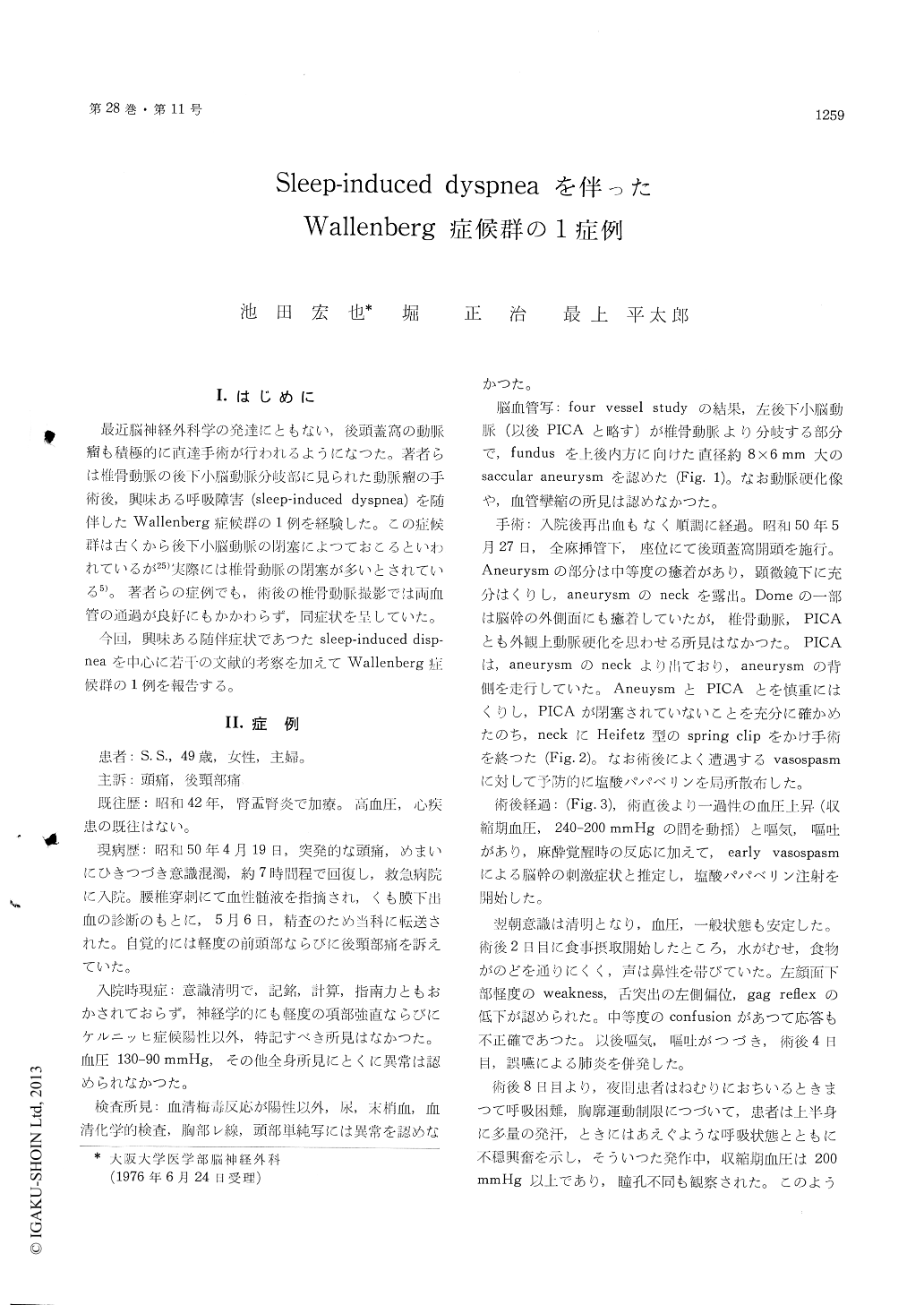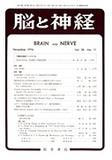Japanese
English
- 有料閲覧
- Abstract 文献概要
- 1ページ目 Look Inside
I.はじめに
最近脳神経外科学の発達にともない,後頭蓋窩の動脈瘤も積極的に直達手術が行われるようになつた。著者らは椎骨動脈の後下小脳動脈分岐部に見られた動脈瘤の手術後,興味ある呼吸障害(sleep-induced dyspnea)を随伴したWallenberg症候群の1例を経験した。この症候群は古くから後下小脳動脈の閉塞によつておこるといわれているが25)実際には椎骨動脈の閉塞が多いとされている5)。著者らの症例でも,術後の椎骨動脈撮影では両血管の通過が良好にもかかわらず,同症状を呈していた。
今回,興味ある随伴症状であったsleep-induced disp—neaを中心に若干の文献的考察を加えてWallenberg症候群の1例を報告する。
One case with Wallenberg's syndrome followed by the neck clipping of the posterior inferior cerebellar aneurysm was reported.
The patient was 49 years old female with the subarachnoid hemorrhage, who had previously no history of the cardiovascular disease.
The vertebral angiogram revealed a saccular aneurysm of the left vertebral artery at the origin of the posterior inferior cerebellar artery.
The preoperative neurological examination were normal, except for the slight degree of the menin-geal irritation.
The surgical intervention was successfully per-formed on 39th day after the subarachnoid hemor-rhage.
Postoperative course was eventful, presenting the typical Wallenberg's syndrome, which was compli-cated the accompanying signs.
The troublesome accompanying signs were chiefly automatic respiratory dysfunction (sleep-induced dyspnea), autonomic dysfunction (Horner's syn-drome, perspiration, hypertension), and restless confusion.
The postoperative vertebral angiogram showed the obliteration of the aneurysm and the sufficient circulation of the vertebrobasilar system, especially the posterior inferior cerebellar artery.
The mechanism of "sleep-induced dyspnea" was discussed in detail from the literatures.
In addition to the above mentioned, it should be stressed that the recognition of "sleep-induced dyspnea" and the other accompanying signs are important for the treatment of the patient with the brain stem lesion.

Copyright © 1976, Igaku-Shoin Ltd. All rights reserved.


